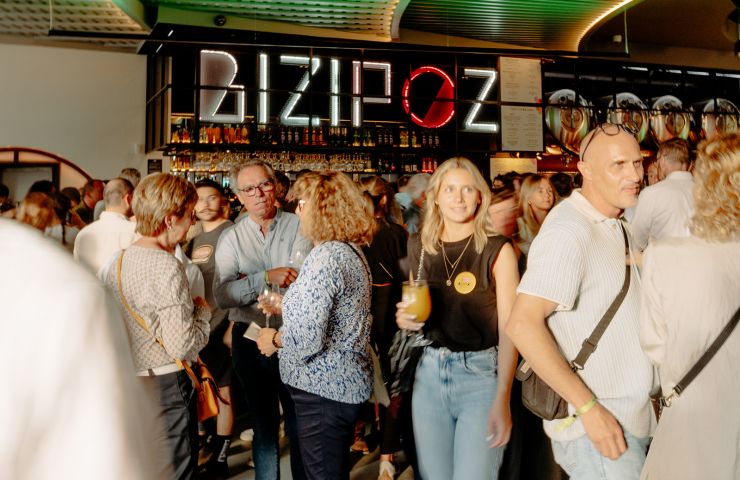- Home page
- Experiences to live
- Culture and Heritage
- Basque carnivals, a colorful tradition in February
- Culture and Heritage
- Experiences to live
Basque carnivals, a colorful tradition in February


Dance, music, entertainment and above all conviviality, these are terms that clearly define this custom from the south of France. Winter ends slowly to give way to spring, an important moment for the Basques who joyfully celebrate the renewal of life in the Pyrenees. Put on your mask and costume to enjoy the Basque carnivals during the month of February.
Photo report: AdobStok
Basque carnivals, a celebration not to be missed in the south of France
Every year, it is in February that you can participate in the Basque carnivals, and admire the magnificent colorful parades . Called Ihauteriak in Basque or even masquerade , this form of popular theater is a real spectacle. Listen to the music that rises in the streets of towns and villages, and let yourself be carried away by the festive atmosphere brought by all Basque generations. The end of January marks the arrival of spring , a time celebrated with customs and traditions such as the traditional awakening of the bear, or the condemnation of San Pantzar.
Take the opportunity to take pretty photos on the most beautiful spots in the Basque Country
Basque carnivals, an essential tradition in the Basque Country
Depending on the city, the carnival can last several weeks, with a variety of parades and workshops depending on the festivities organized. However, some customs are essential, such as :
- The awakening of the bear which evokes the arrival of spring with the awakening of nature and the Pyrenees. He also launches the start of the carnival, when he descends the mountains.
- The judgment and condemnation of San Pantzar , the scapegoat accused of all evils and burned at the end of the carnival in the public square.
- The festive meal which follows the pyre, a convivial moment as the Basques know how to do.
Don't miss these Basque Country carnival highlights and let yourself be drawn into a parade of colorful entertainment.
Get on your bike to reach the different towns, and take part in the carnival of several localities. Between greenways, cycle paths and major routes , you have plenty to pedal about.
Basque carnivals, two times of celebration during the festivities
Some villages preserve traditions at the very heart of carnival. The residents are the real actors in this street show , through :
- Santibate where young people take the appearance of Zirtzil, exuberant and grimacing characters. Dressed in costume and sometimes disheveled, they parade through houses with a colorful mask, or in makeup, to drink and eat.
- Libertimendua, celebrated in Saint-Palais and Saint-Jean-Pied-de-Port, is a rather comical show composed of actors, musicians and dancers. On a Sunday morning, they entertain the public with pamphlets inspired by village life, bolantak dances and Zirtzil nonsense.
- The tour of houses by the Kaskarot is organized the day before the carnival. Costumed from head to toe, the young inhabitants make the quest while dancing in the streets of the village, without forgetting a single neighborhood.
Take the opportunity to visit Saint-Palais and Saint-Jean-Pied-de-Port
Basque carnivals organized in Saint-Jean-de-Luz and Bayonne
These two important cities in the Basque Country enliven the Basque carnival every year, each with their own particularity. In Saint-Jean-de-Luz, it always begins on the 1st Saturday of the month, starting with Bear Day. Between dances, parades and workshops, the week is punctuated with activities to end the following Saturday with Pantzar's trial and shared dinner. In Bayonne, it’s the school holidays that kick off the festivities. The inevitable awakening of the bear and the pyre of Pantzar mark the carnival, just like the Joaldunak procession. Wearing shivering pointy hats, sheepskins and large bells at their waist, they announce the arrival of carnival.
What if you took a little tour of Bayonne and Saint-Jean-de-Luz ?
Basque carnivals, or Gizakunde in Spanish
Basque carnivals have their origins across the border, with the Spanish, who celebrate the end of winte. Here again, traditional dances and activities around the bear are the center of the event. Whether in Ituren or Zubieta, only the names change since Pantzar becomes Jantzilo and the bear becomes Hartza . Some characters appear in Spain with:
- Dama, a man disguised as a woman,
- Tunturru , the man with the drum,
- Botellero, the man and his basket of apples.
Don't miss the Basque carnivals in February , you will be delighted to take part in these crazy days marked by good humor and conviviality. Of course other cities such as Biarritz, Hendaye, Bidart and Anglet.
Extend your stay to visit the most beautiful coastal villages on the Basque coast on the Spanish side.
Venta Biok
Venta Biok
BIOK Experiential Shopping - Quality at the best price Welcome to BIOK Shopping Centers! Located in the charming ...
Urdax
Venta Peio
Venta Peio
Located in a privileged natural setting, Ibardin has established itself as one of the most complete shopping areas ...
Bera
Bizipoz bar
Bizipoz bar
Discover the Bizipoz Bar, your new unique place to live on the Basque Coast! The BIZIPOZ BAR is an intergenerational ...
Saint-Jean-de-Luz
Did you like our article? Find others on the Basque Country Guide blog . We are also on social networks, come and consult the Facebook Page of the Guide du Pays Basque , as well as our Instagram account @guidedupaysbasque
OUR CITY GUIDES IN EUROPE










